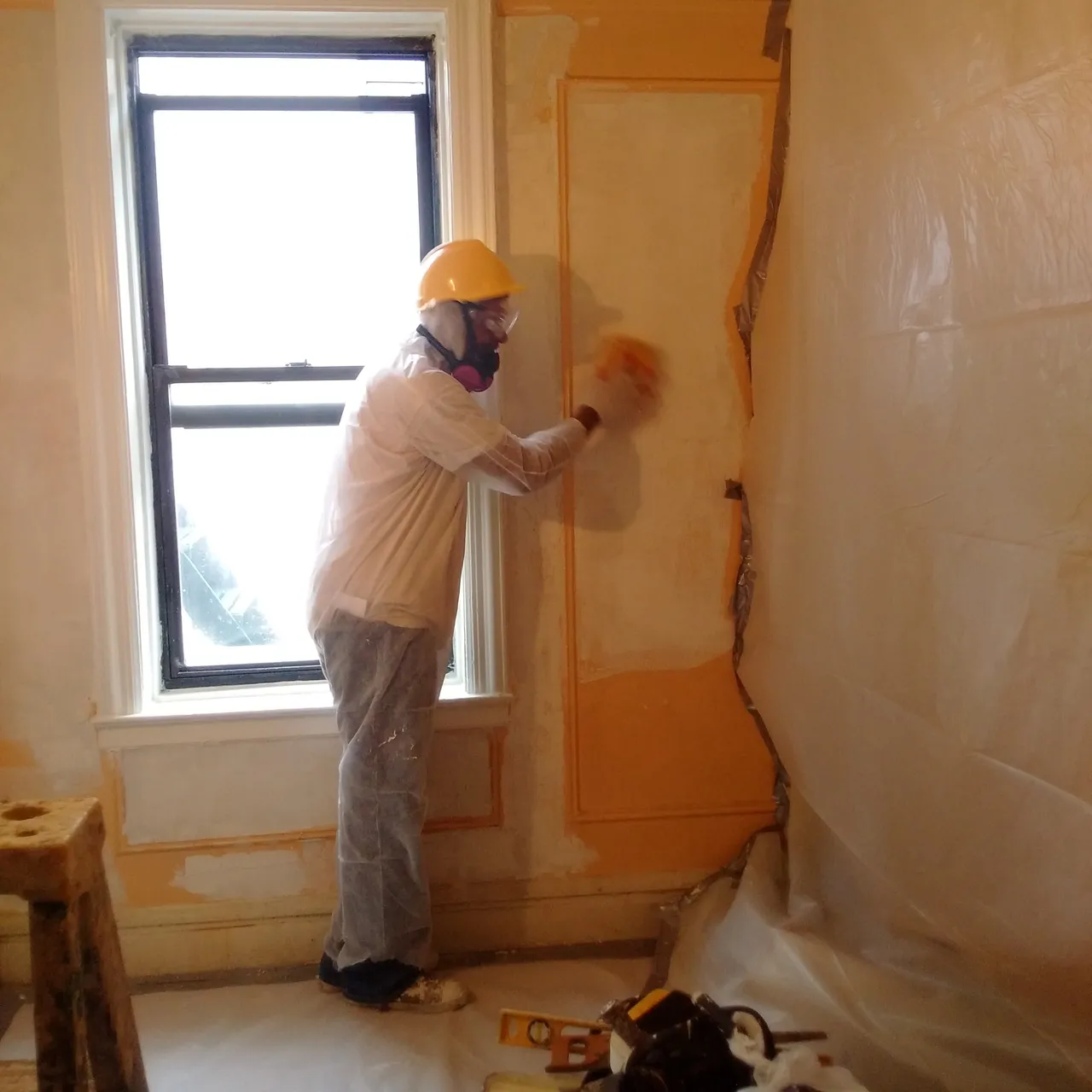Lead Removal Contractors-- Seasoned Experts for Lead Abatement
Lead Removal Contractors-- Seasoned Experts for Lead Abatement
Blog Article
Comprehensive Guide on Effective Lead Violation Elimination Strategies
In the realm of ecological safety and security, attending to lead infractions requires a meticulous and structured strategy. This comprehensive guide begins by highlighting the essential preliminary actions of recognizing lead hazards through advanced evaluation and screening approaches. Strategies such as XRF analysis and dirt clean tasting are essential in identifying contamination sources. Moreover, the guide elaborates on the value of sticking to rigid security procedures during the removal process, including using proper PPE and isolating influenced locations (Lead Paint Removal Company). The succeeding areas guarantee to go over post-removal verification and preventive techniques, making sure long-lasting safety and compliance. Discover the intricate information that make these strategies not simply efficient but crucial.
Identifying Lead Hazards
Recognizing lead hazards is an essential very first step in alleviating the dangers associated with lead exposure. Lead, a poisonous metal, can be existing in various ecological mediums, including paint, dirt, water, and dust. It postures severe health and wellness threats, particularly to kids and expectant ladies, leading to neurological damages and developmental hold-ups. Specific identification of possible lead sources is necessary for reliable remediation.
The preliminary phase in determining lead dangers entails recognizing typical lead resources within the constructed setting. Frameworks constructed prior to 1978 are particularly susceptible due to the prevalent use of lead-based paint during that period. Additionally, soil contamination can occur from degrading exterior paint, commercial emissions, or historic use of leaded gas.
One more considerable source is lead piping and plumbing fixtures, which can leach lead into drinking water. Customer items such as playthings, ceramics, and imported products might additionally have unsafe lead degrees. Significantly, work environments and hobbies entailing lead can track impurities into homes.
Assessment and Screening
When dealing with lead dangers, reliable evaluation and testing are paramount. This crucial action makes sure the identification and metrology of lead visibility, consequently directing succeeding removal efforts. First evaluation usually includes a visual examination to determine potential lead resources, such as weakening paint or infected dirt. This is complemented by even more rigorous screening approaches to determine the extent of contamination.

Dirt clean sampling is one more essential technique, specifically in domestic setups. By accumulating samples from floors, windowsills, and other surface areas, this approach offers insights into prospective direct exposure risks. Dirt screening around building perimeters is vital to identify lead contamination that can position dangers, particularly to kids.
Safe Elimination Treatments
Upon finishing detailed assessment and testing, executing risk-free removal treatments is the following essential phase in dealing with lead risks. This process guarantees that lead-contaminated products are properly and securely removed, reducing risk to both workers and residents. The initial action includes isolating the affected area making use of plastic bed linen and appropriate sealing techniques to avoid the spread of lead dirt.
Workers should don suitable personal safety devices (PPE), including respirators, gloves, and non reusable coveralls, to alleviate exposure. Employing specialized devices and damp techniques, such as wet sanding or making use of HEPA-filtered vacuums, reduces the diffusion of lead bits. It is essential to avoid completely dry fining sand or rough blasting, as these approaches can generate unsafe lead dirt.
Waste disposal is an additional important part; all polluted products need to be safely gotten and classified according to EPA and neighborhood policies. In addition, comprehensive cleansing of the work location with HEPA vacuums and wet cleaning makes sure the removal look what i found of residual lead particles.
Post-Removal Confirmation

Confirmation of effective lead elimination, understood as post-removal verification, is critical to ensure the security and habitability of the remediated area. This evaluation makes sure that all recognized resources of lead have actually been attended to and that no noticeable indications of contamination continue to be.
Adhering to the aesthetic assessment, ecological tasting is carried out. This entails accumulating dirt, dirt, and occasionally water examples from the remediated location. Approved labs analyze these samples to measure lead degrees, guaranteeing they fall below the safety limits developed by governing bodies such as the Epa (EPA)
In enhancement, air high quality testing might be done to find airborne lead particles, especially in situations where comprehensive lead-based paint removal or restoration has occurred. The results of these tests offer quantitative information verifying that the lead levels are within permissible restrictions.
Eventually, post-removal verification works as an important checkpoint, verifying the effectiveness of the lead reduction efforts and guarding the health and wellness of residents and site visitors.
Precautionary Measures and Upkeep

An essential safety net includes using lead-safe licensed contractors for any kind of remodelling, repair work, or paint tasks. These specialists are learnt practices that lessen lead dirt and debris. Furthermore, maintaining colored surfaces to prevent damaging or peeling is essential, as degrading paint can launch lead particles right into the setting.
Educational initiatives targeting residential or commercial property proprietors and occupants pertaining to the risks of lead and the relevance of reporting any type of possible hazards can even more improve preventative initiatives. Routine cleaning utilizing HEPA vacuum cleaners and visit damp wiping techniques can considerably minimize lead dirt buildup.
Conclusion
In summary, effective lead infraction elimination demands a precise technique including thorough assessment, accurate testing, get more and rigid elimination treatments. Ensuring security with appropriate seclusion and personal protective equipment remains critical. Post-removal verification through ecological tasting and air top quality screening corroborates conformity with well established security requirements. Moreover, continuous evaluations and maintenance are important to minimize future lead threats, therefore guarding public wellness and making sure continual compliance with regulatory needs.
Report this page